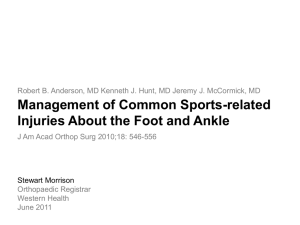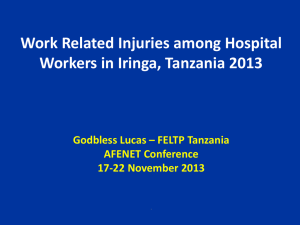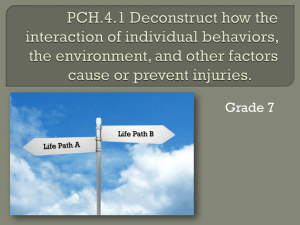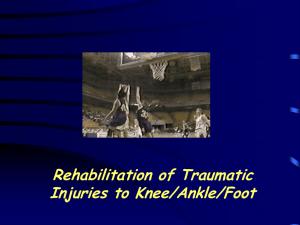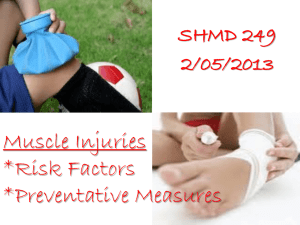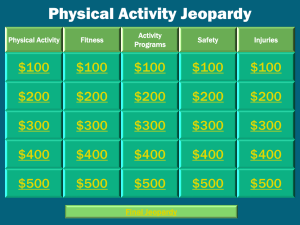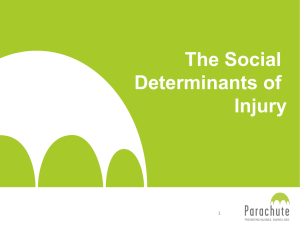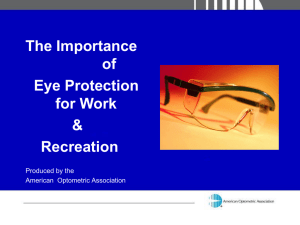Presentation
advertisement
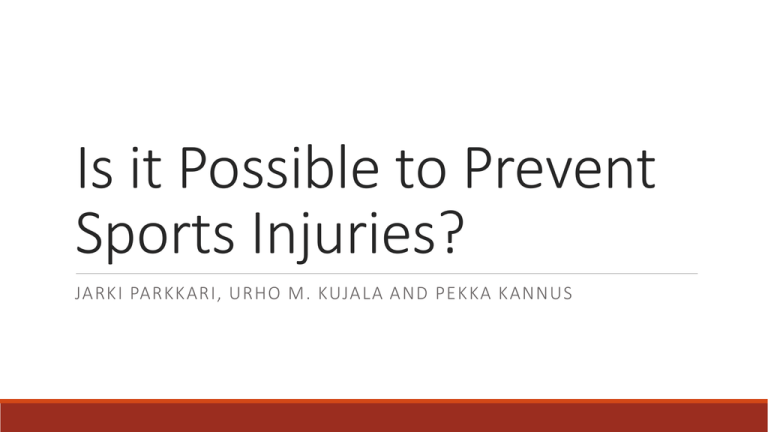
Is it Possible to Prevent Sports Injuries? JARKI PARKKARI, URHO M. KUJALA AND PEKKA KANNUS “Sports injuries are one of the most common injuries in modern western societies. Treating sports injuries is often difficult, expensive and time consuming, and thus, preventative strategies and activities are justified on medical as well as economic grounds.” Jarki Parkkari, Urho M. Kujala and Pekka Pannus pg. 985 • Most sports teams and sports fans seem to wave off injuries as part of the sport. • “Walk it off” • “Rub some dirt on it” • But with some easily implemented preventative measures we could watch our favorite athletes play for a few more seasons We Need Data • Successful injury prevention requires valid pre- and postintervention data. • We need to know the extent of the problem. • The aetiology, risk factors and exact mechanisms of injuries need to be identified before initiating any prevention program. • Measurement of the outcomes of the study need to be standardized. • Must be randomized. Recording Injuries and Monitoring Exposure • It would be optimal to use the same sports injury method in all sports. Why can’t you do this? The Criterion for Measuring a Injury • Time lost from practice* * - This doesn’t work in all cases. It would have a hard time measuring mild to medium concussions or a laceration “Within a particular sport, the overall gender differences in the injury risk is small, but differences by age groups are more pronounced. Injuries in children are less frequent than those in adults. Athletes usually spend far more time in training than competing. Since about half of acute injuries associated with team-game athletes occur in competitions, it is evident that competitions involve a higher risk per hour of activity than training.” Jarki Parkkari, Urho M. Kujala and Pekka Pannus pg. 988 So, Can Injuries Be Prevented? Yes they can! Here’s the breakdown. SOCCER • Relative Risk = 0.25 Control Group p < 0.001 • This can be reduced by 75% through the use of prophylactic ankle taping, ankle disk training, controlled rehabilitation, fitting for optimal equipment, teaching of the importance of disciplined play and the risk of increased injuries at training camps. LONG-DISTANCE RUNNING • Relative Risk = 0.49 Control Group p < 0.005 • This can be reduced by 51% through the instruction of proper warm up and stretching, selection of well fitted running shoes and individually tailored training regime. EUROPEAN TEAM HANDBALL • Relative Risk = 0.17 CI = 95% • This can be reduced 76% through a simple 10-15 ankle disk training session and warm up before matches FOOTBALL • Relative Risk = 0.44 p < 0.005 • The study was only conducted on defensive players • A prophylactic knee brace significantly reduced injuries but, did not decrease the severity of knee injuries. Ankle Injuries “Five randomized studies with data from 3954 participants focused on prevention of ankle injuries. Four of these studies examined ankle stabilisers an provided high-quality evidence that the use of semirigid ankle stabilizers reduces the risk of ankle sprains.” “There is no strong relationship between the shoe type used (highversus low-top) and ankle sprains in basketball players, indicating that the protective effect of ‘high-top’ shoes remains to be established.” Jarki Parkkari, Urho M. Kujala and Pekka Pannus pg. 990 Knee Injuries • The prophylactic knee brace is the best preventive equipment and should be used by most if not all high impact sport athletes. • If athletes are taught how to avoid dangerous injuries many can be prevented. Remember • Injuries in sports will never be 100% preventable. • There is a co-intervention effect. The Co-intervention Effect • Informing a athlete of the risk of injury may have an effect on the risks taken by the athlete. Teaching athletes how to avoid risks is the best method for preventing them. • Currently there is no injury prevention classes being taught in any major sport.* * - During the NBA Combine they used sophisticated technology to track players fatigue and reduce the risk of injury. “There is a continuous need for high-quality scientific studies on the effects of various types of injury prevention and it is important that there is a system of collecting data on all injuries occurring in new modes of sports as well as on the catastrophic injuries in all types of sports.” Jarki Parkkari, Urho M. Kujala and Pekka Pannus pg. 991

